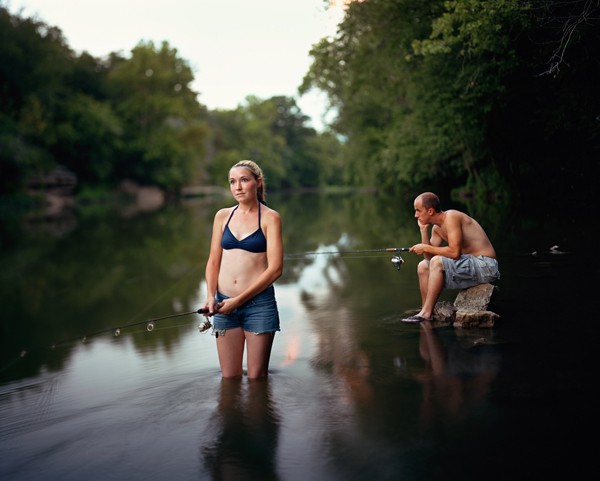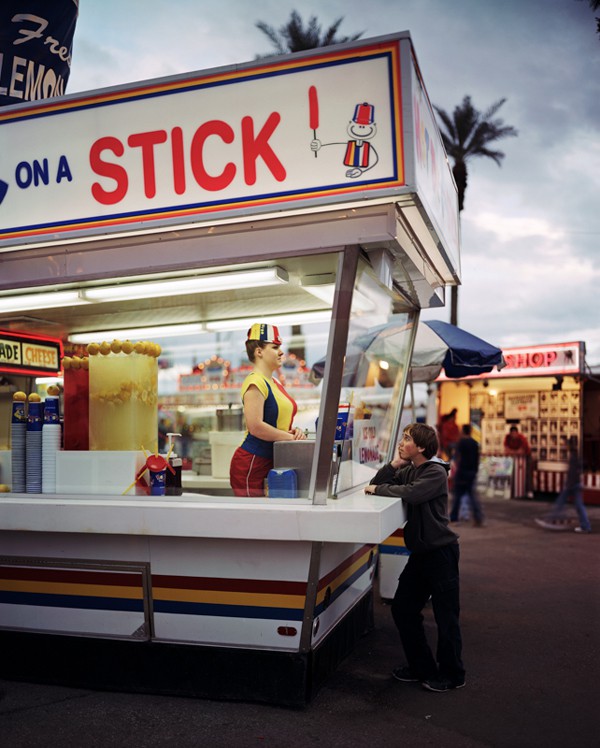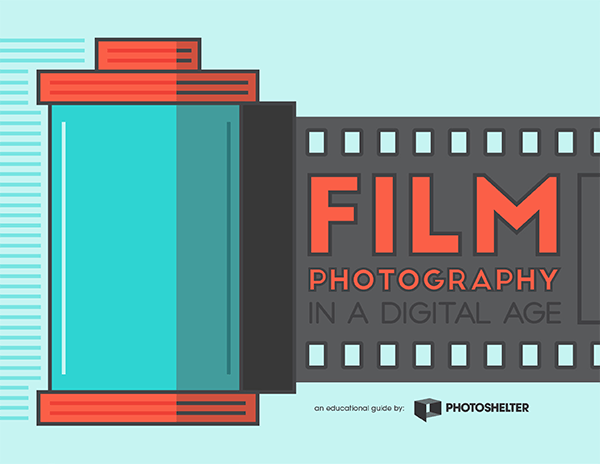Share
One Photographer’s Case for Large Format Film
Photo by Greg Miller Greg Miller’s large format photography has appeared in numerous publications including The New York Times Magazine, New York...

Greg Miller’s large format photography has appeared in numerous publications including The New York Times Magazine, New York Magazine, TIME, Esquire, Fortune, LIFE, and more. In 2008, his enthralling portraiture earned him a Fellowship in photography from the John Simon Guggenheim Foundation. We recently interviewed Greg in out latest guide, Film Photography in a Digital Age to find out why he believes so strongly in film.
As the majority of the world has shifted to digital (including much of the art photography world), you have held steadfast to shooting with film and 8×10. Why?
Because it’s beautiful.
If only I could answer the “why” question by sending you to my website but that is only 72 dots per inch! But do go to my website! It will give you a clue, but it won’t tell you why. The “why” is the sum total of all the parts. You begin to see why in a large print but that is not all of it either. It is in how people react to the camera, my excitement and enthusiasm in doing what I do. It is in the musty smell of my dark cloth and bellows on a summer day. It is in the passion I feel my subject deserves. Shooting 8×10 is an optical embrace.
Having said that, I love digital photography. Most of my jobs are shot digitally. I shoot 1000’s of DSLR snapshots a month of my family. I love my iPhone, etc.
But I love my 8×10 camera more than any of that.
Are there things that you think film does better than digital?
Yes, film is better at having a large surface area. You can have the beautiful optics of an image from a large lens projected onto the large film area. 8”x10” is 4x larger than a medium format sensor surface area at 4.25 x 6.25 cm, so medium format digital will always look just a little better than 35mm, but not significantly so. And there are only several mediocre cameras that will take the backs.
Do you process and print all your own work?
I have processed all my color film, no matter where I have shot it in the world, at LTI/Lightside on 30th St. in Manhattan, since… I can’t remember…1998? I used to have them print it too, but I enjoy printing too much. I print all my work in my studio in Connecticut.
Are you surprised at the resurgence of interest in film and alternative processes (e.g. tintype, the Impossible Project, New55)?
I guess it doesn’t surprise me because the beauty of it all is very addictive. I am grateful for anyone who is shooting film and shares the same work ethic for photography as myself and others I know. We need a community. No one is going to run the machine that makes Kodak’s Portra NC film for just me.

Photo by Greg Miller
Your work so elegantly captures people in their environments whether wandering around the county fair or along the coast of Italy. What compels you to portraiture vs other subject matter like landscapes?
As early as I can remember, I have been drawn to photographing people and telling a story through people. I am fascinated with the idea of photographing strangers and creating a narrative even when people within the frame didn’t know each other. I started working that way in the mid 90’s with my Gotham series. In the beginning each photograph was its own individual story, but in time, I began wanting to tell larger stories with bodies of work. In the end, my projects, like Primo Amore, County Fair, Nashville, come back to themes of unrequited love and longing.

Photo by Greg Miller
Do you think film will always exist in our lifetime, or will the economics of production make it extinct?
I find it very difficult to predict anything being around for our lifetime these days, whether it is bees, our current shorelines or film photography. But I think it says something that film outlasted the company that invented and manufactured it. I have a dream that someone will designate film photography a national treasure, like Jazz. I think it’s important to preserve and continue teaching it in schools so that it continues to be embedded in our culture, as it has been for the last 150 years. And, most importantly, so that the creation of images doesn’t end up belonging to corporations like Facebook or Apple, but rather remains the domain of each of us.
Greg Miller is a frequent lecturer and is teaching classes at the International Center of Photography and the Maine Media Workshops this Summer and Fall.
Want to learn more about the photographers and companies still celebrating film? Check out our guide, Film Photography in a Digital Age.







